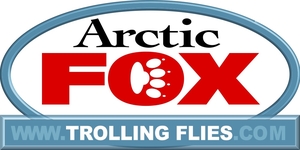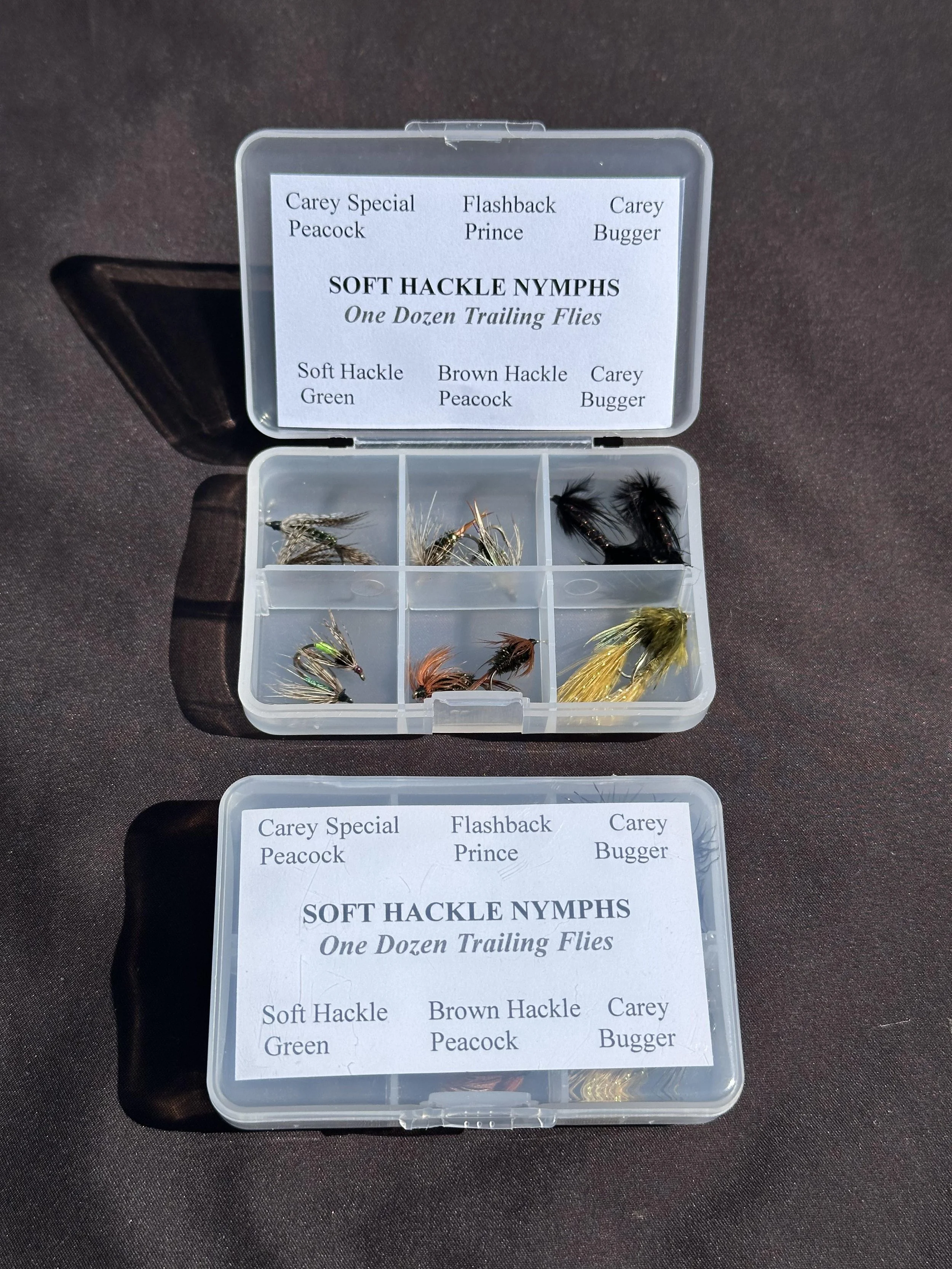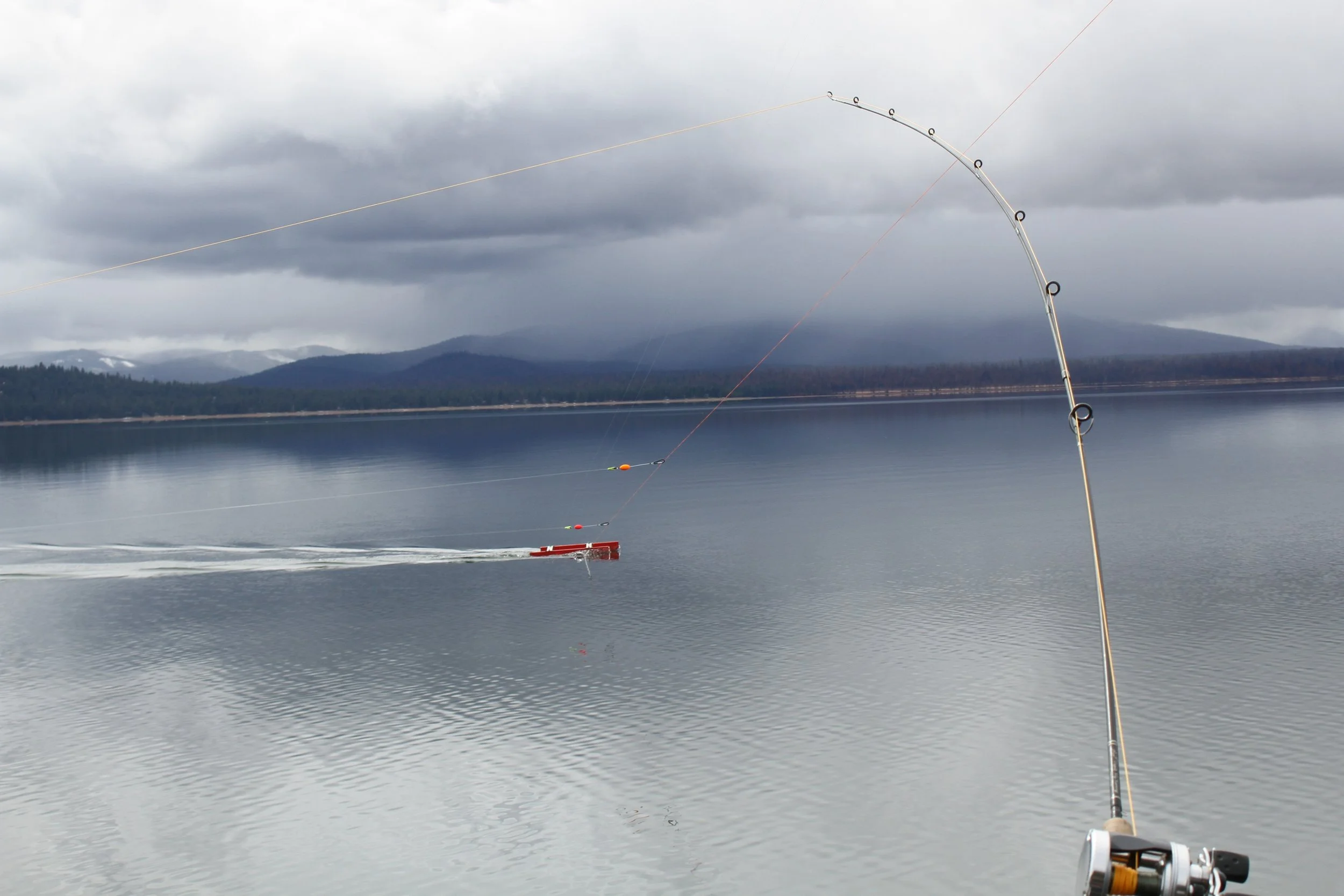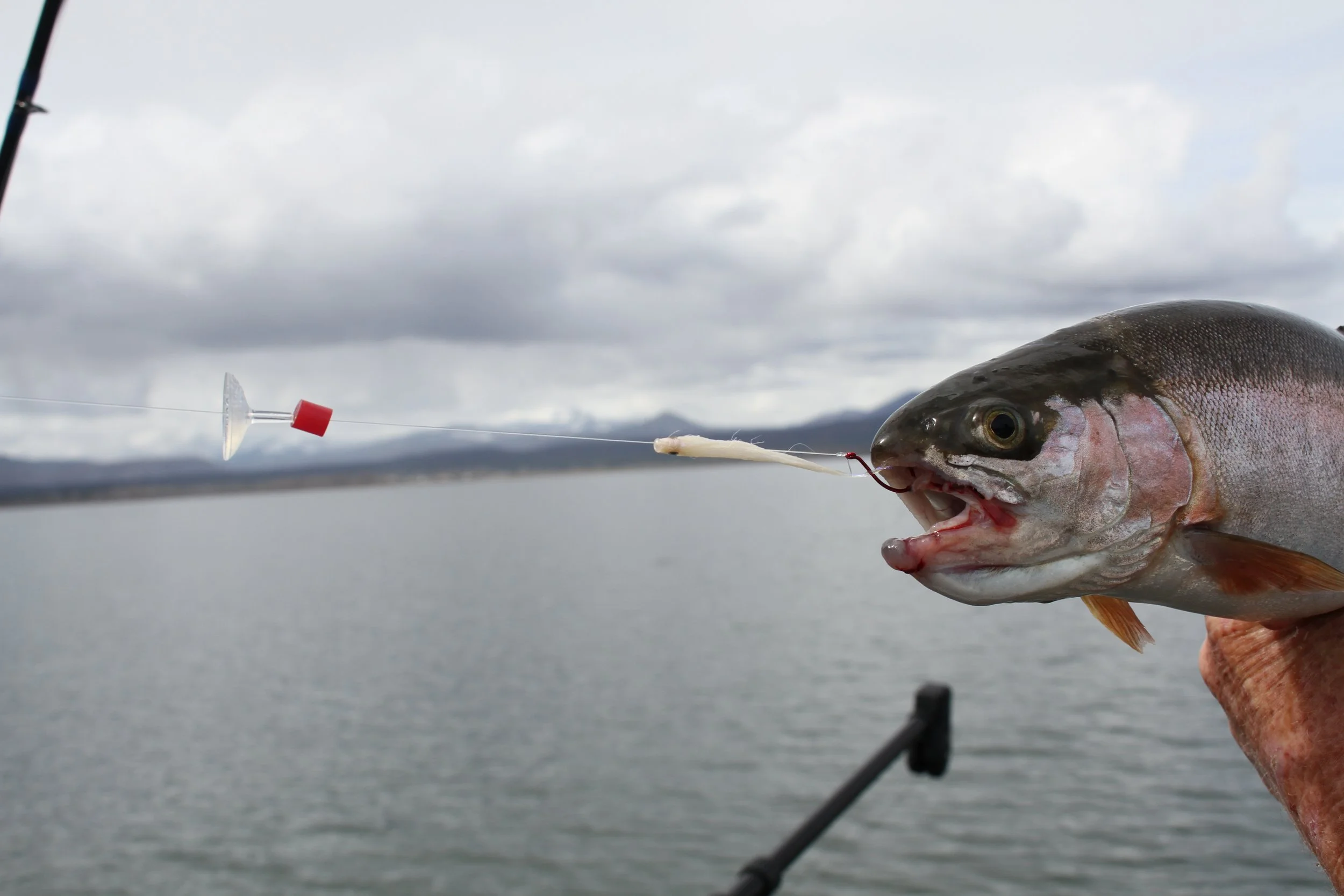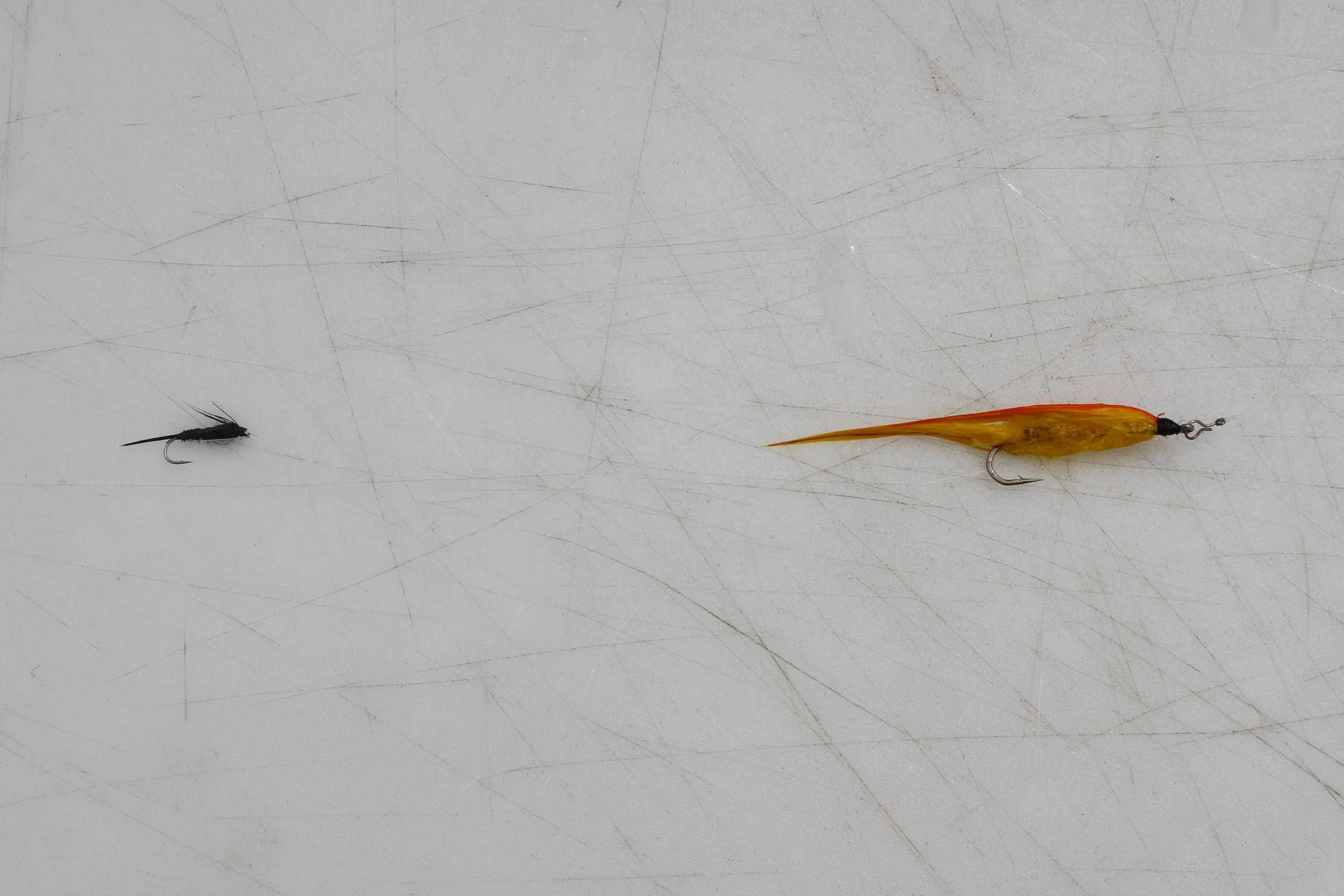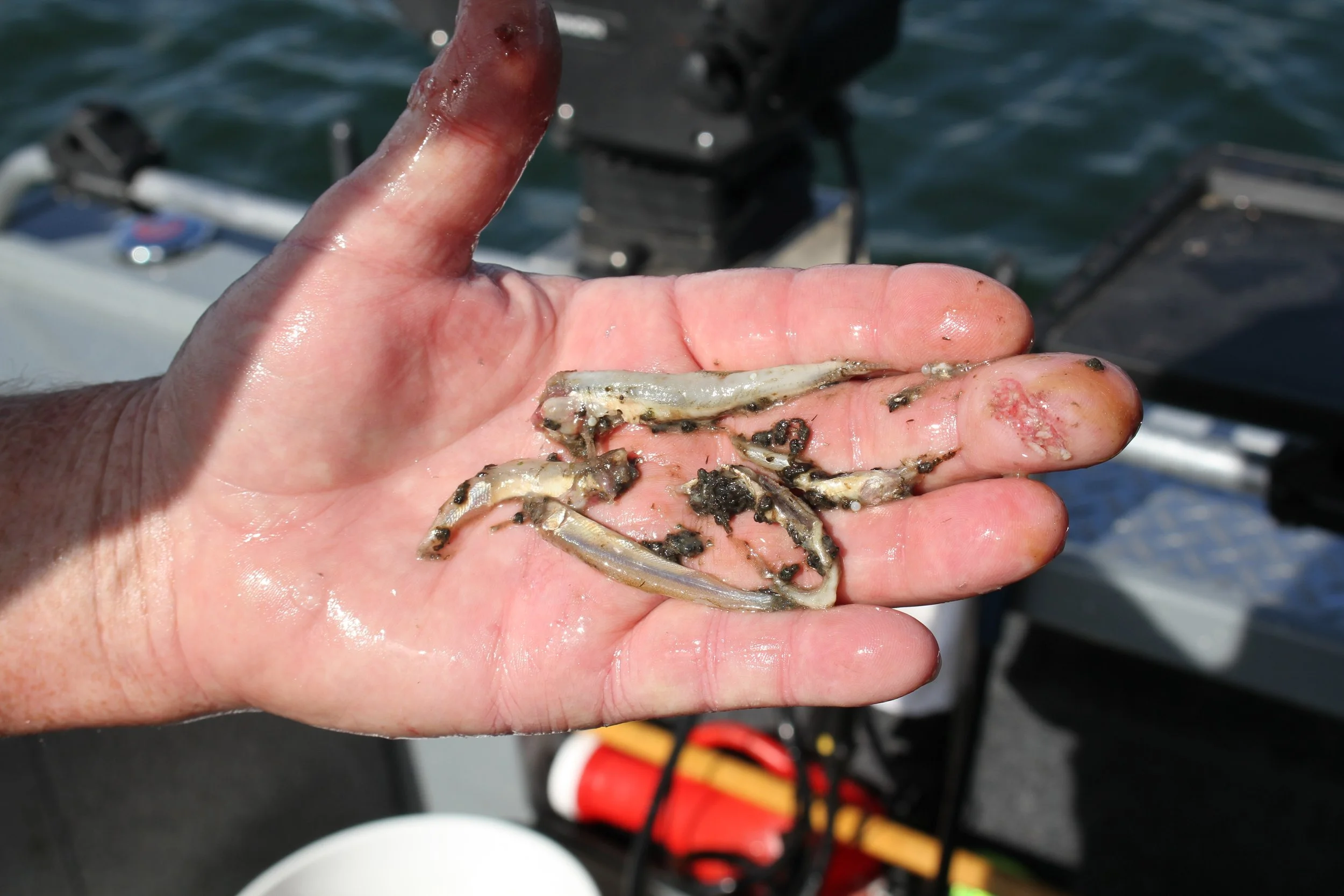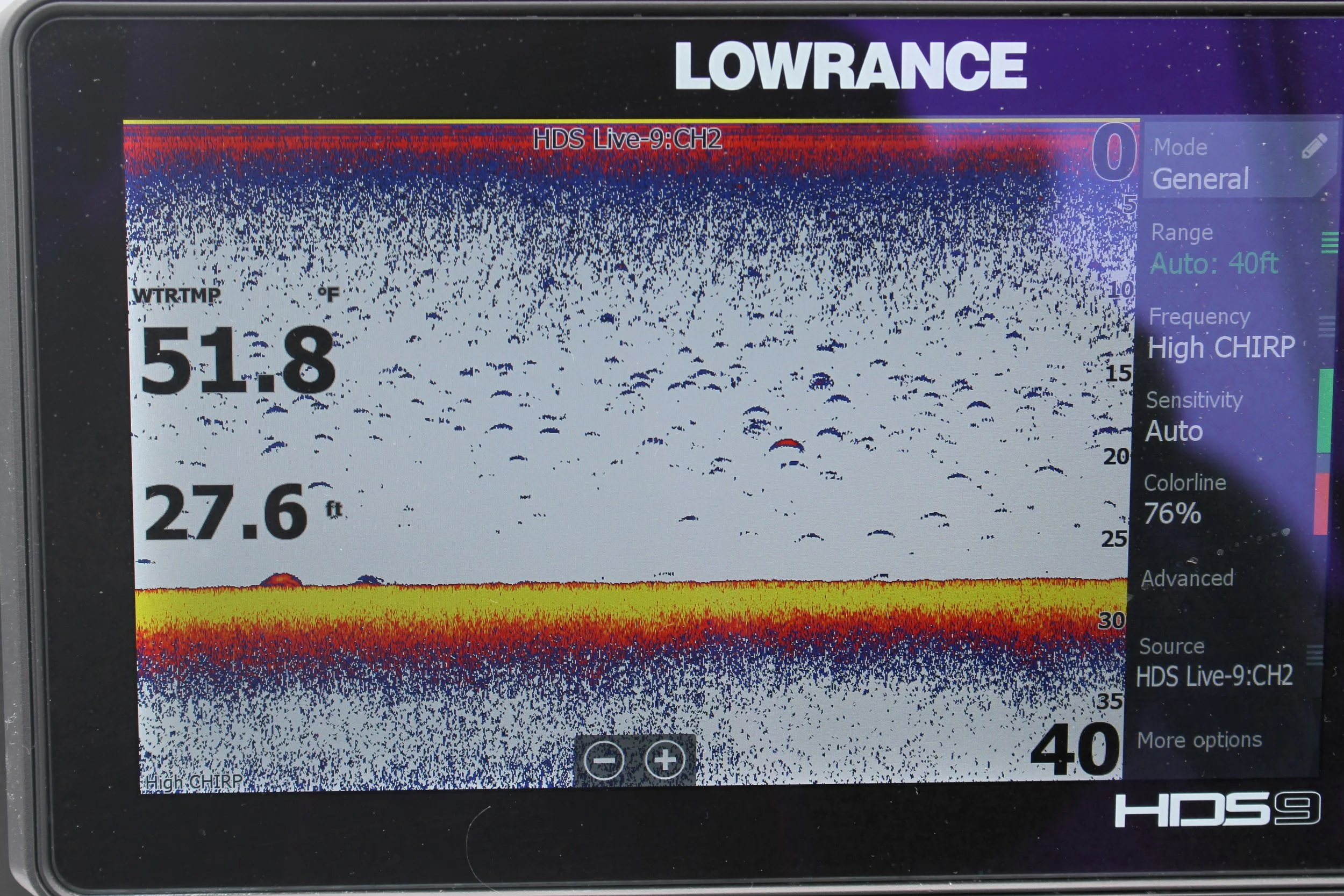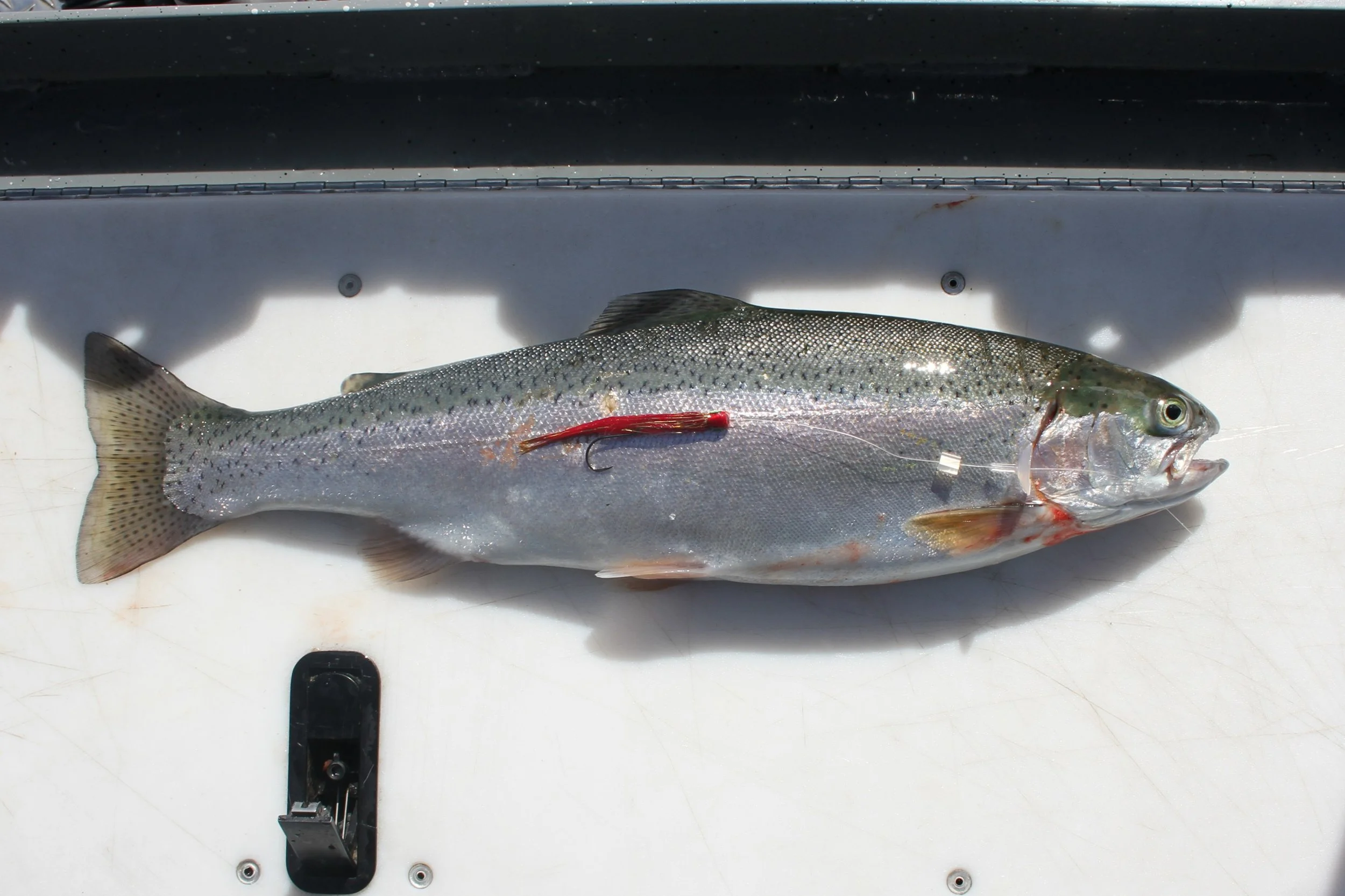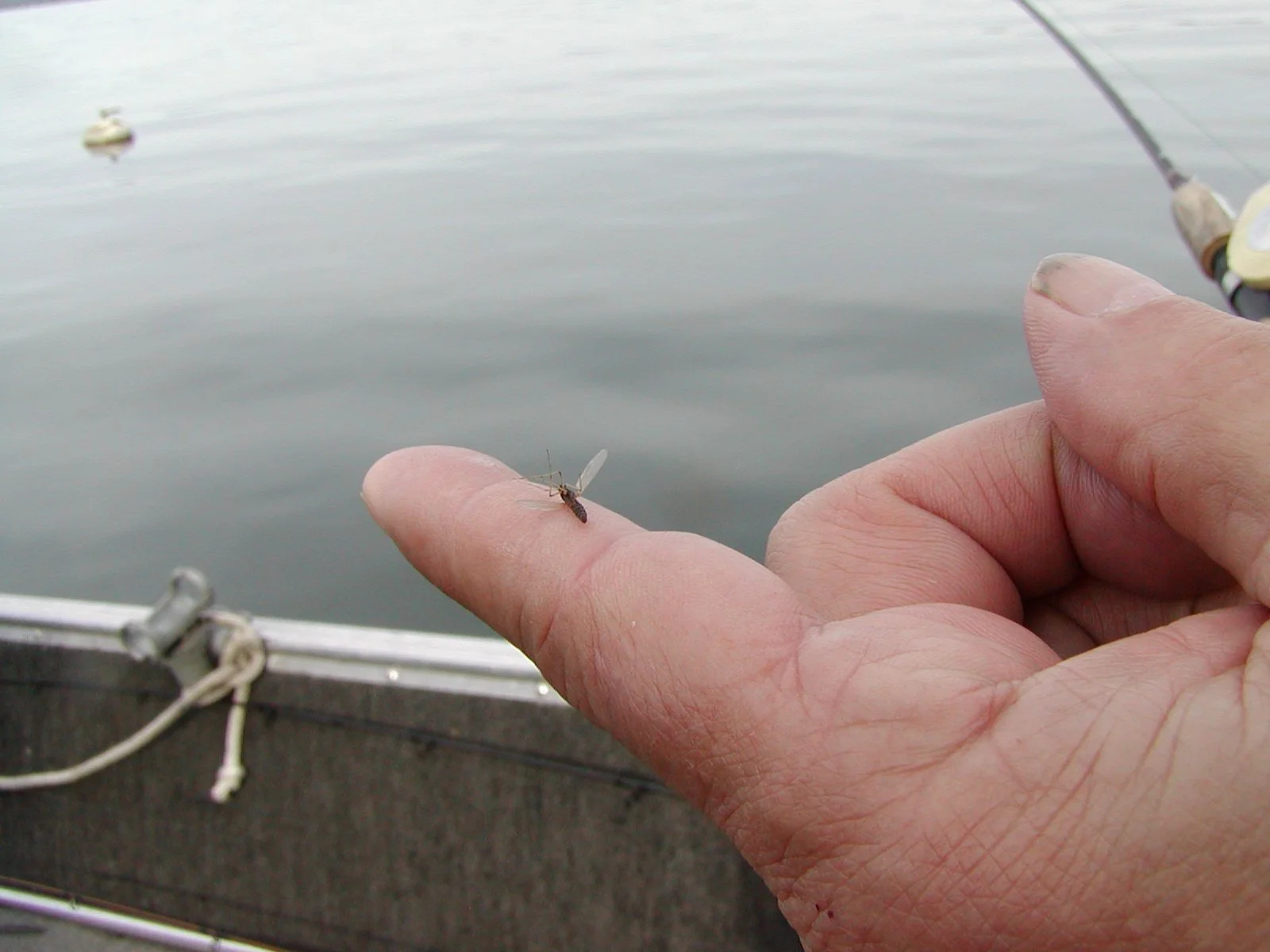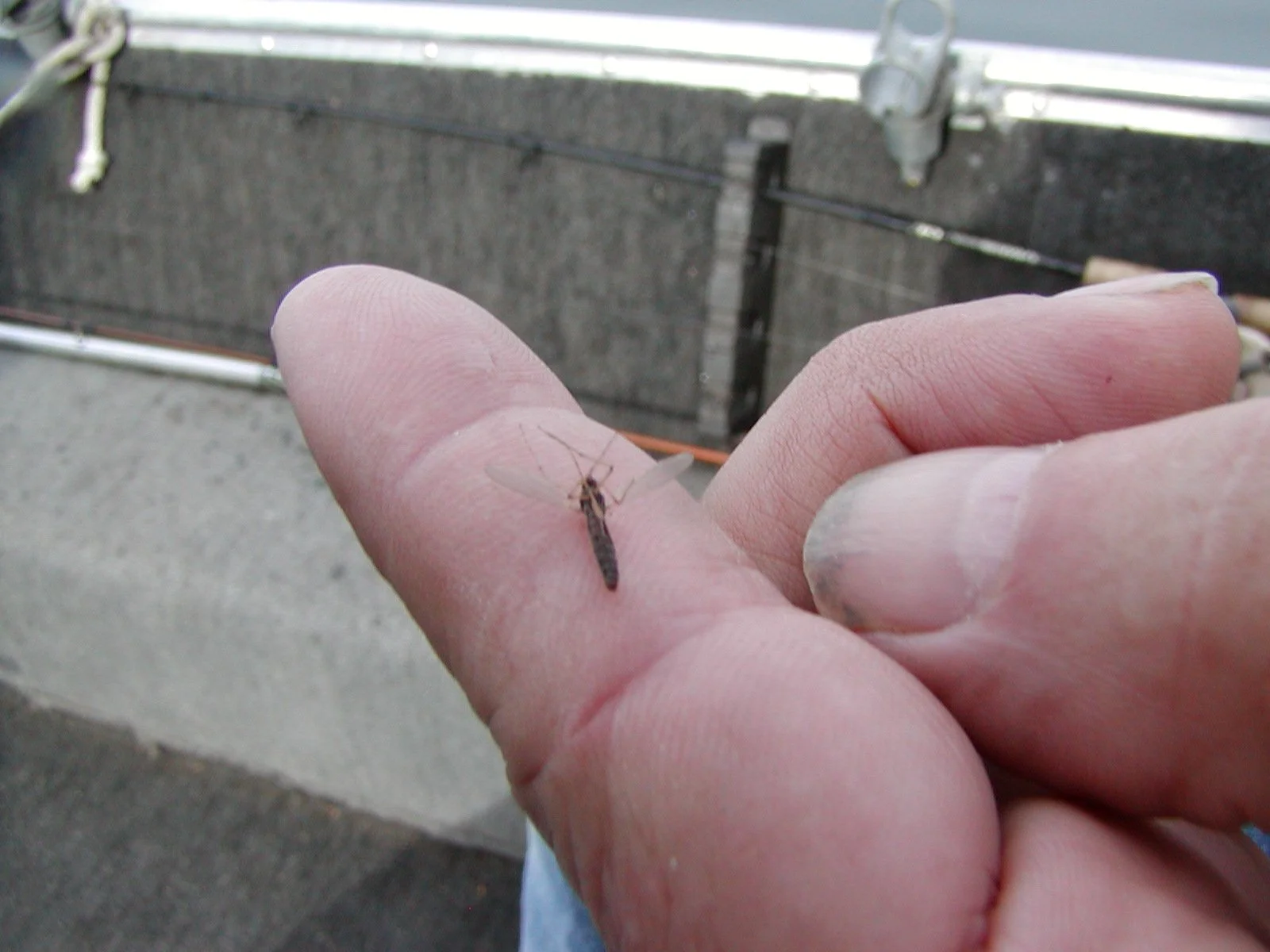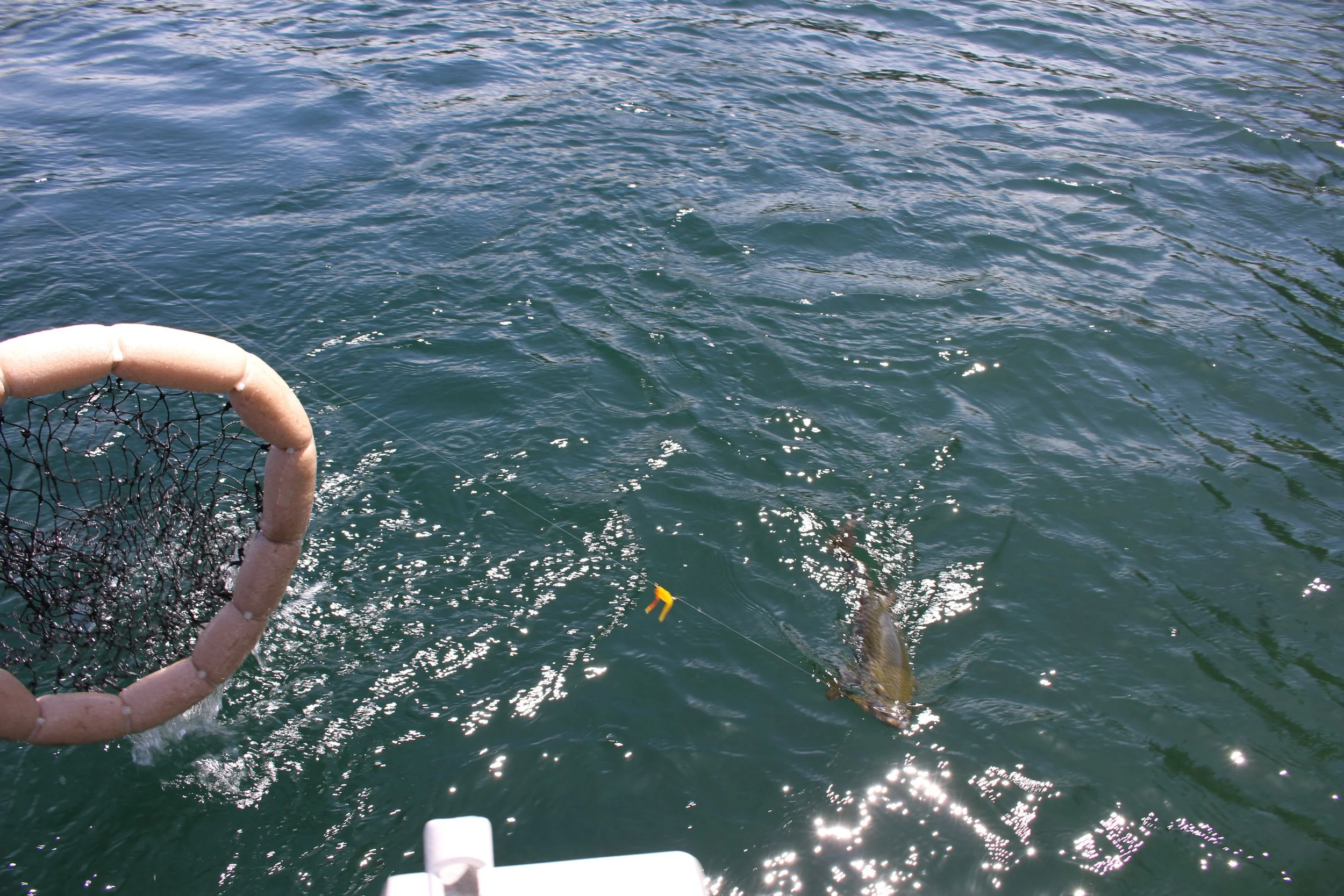IT’S INSECT TIME IN THE LAKES!
Spring has arrived and the food chain has changed in the mountain lakes.
A series of cold wet storms came off the Pacific in the last week of March 2025. By the 2nd of April the skies cleared, and the daytime temps jumped as much as 20 degrees from the mid 40’s to the mid 60’s. Mother nature responded by waking up the insect world. Trout feeding habits changed
From Lake Shasta (1000’) to Lake Almanor (4500’), to Scott’s Flat (3000’) To Bullard’s Bar (2000’) the insects began to hatch. These are the lakes from which I have received confirmed reports. The dominant species in the early season are midges which can emerge from deep as well as shallow water. For those that are not familiar with midges, they can be described as mosquitos that don’t bite.
Lake Almanor, one of the best fishing lakes in the Sierra, has a well defined food chain cycle. In the first two months of the new year water temps are through the 30 degree range. There will be ice on the water in the shallow wind protected coves and open water over the main body. The food chain is dormant and the only food for trout are the pond smelt minnows. The minnows are in the deepest area of the lake. Almanor is a huge, flooded meadow only 60 feet deep near the dam. The minnows suspended in the warmest water they can find. When the trout feed, they drive the minnow schools up to the surface. Fish at depths of 30 to 40 feet are not feeding. The way to fish this time of year is to troll minnow imitations in the top 10 feet. Arctic Fox Tube Flies in various colors are a “go to” fly.
As the waters warm, near the March equinox, the minnows head to the shallows. The exact timing is weather dependent. The rainbows and browns follow, and the shallow water trolling turns on. This pattern can last for a few weeks until the midge hatch begins. This year (2025) the midge hatch started April 6th to 8th depending on location. The surface water temp at this time started at 45 degrees at dawn and rose up to 50 degrees by late afternoon.
On Almanor when midges start hatching the rainbow trout switch from a minnow diet to a preference for insects. This is not a hard and fast rule, the tendency when minnow imitation trolling is to catch more browns than rainbows and smallmouth bass are added to the catch. But when you see trout rolling on the surface the chances they are rainbows not browns. The Almanor Fishing Association waits for the midge hatch to come on to release their net pen trout. They want a reliable food source that is easy for the trout to catch. By late April there are a lot of 12-to-14-inch trout on the bite.
Up on Lake Shasta, guide Jeff Goodwin reports that since the heavy weather passed, the brown trout bite has come on. His catch has been 5:1 brown trout over rainbows. His guiding schedule changes at this time. He moves down to the Sacramento River to fish the striper spawning run. He notes that the food changes from shad minnows to insects, crickets, ants and crawdads. On Shasta Jeff is a trolling guide fishing minnow style spoons. Coincidentally as the striper run heads down river in late May, the water warms on Shasta and the trout head deeper. At this season the trout return to a shad based diet and trolling minnow imitation resumes as the major food source.
This same week after the storms moved out, fly fishing guide Tom Page headed out to Scott’s Flat Lake looking for smallmouth bass. In addition to bass staging in 10’ to 15’ of water, Tom saw surface feeding trout out over deep water. All he had for gear was sinking lines and leech patterns. He was able to catch a few but he said with a floating line and a Parachute Adams he could have had a field day. Tom was also on Bullard’s Bar guiding for bass and noticed the first surface feeding fish of the year. He assumed they were eating midges.
Brown hooked on nymph, Jay Fair All Round Best on line above the trout.
My solution when trout turn to insects is to add a trailing nymph 8” to 24” behind a trolling fly. I tie a fluorocarbon leader to the bend of the trolling streamer hook. When casting with a fly rod, anglers tend to match the size of the insects. This nis not necessarily the case. I have found even #10 and #12 nymphs are effective. Trout can be opportunistic feeders, especially in spring. I choose nymphs that have materials that move (soft hackle) and have a stout hook. I am offering a boxed selection of a dozen nymphs that I use to pull behind a trolling fly.
Late May 2022 I wrote a blog post about trolling Jay Fair flies with a trailing nymph. On the day we caught more and larger trout on the trailing nymph (article here). To access more of my blog articles, go to the bottom of the navigation bar and click “Blog: Trolling Fly Chronicles”.
